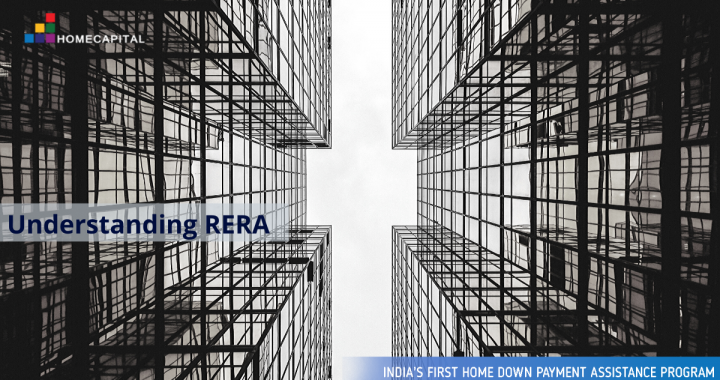
Home Financing
April 3, 2019 . Podcast . 10 min readWhile considering financial assistance in the form of home loan the two home financing options include banks and Housing Finance Companies (HFCs). Usually, banks are considered as the most common place to avail of a home loan. However, you can also avail of a home loan at attractive interest rates from an HFC. An HFC is a kind of a Non-Banking Finance Company (NBFC) solely into the financing of purchase or construction of homes. Banks are regulated by the Reserve Bank India (RBI) whereas HFCs are controlled by the National Housing Bank, a subsidiary of RBI.
When it comes to the funding of loan portfolios, banks use the money deposited by their customers in their Current Accounts & Savings Accounts (CASA) in order to lend the loans. It is the same money that is deposited by customers with banks. On the other hand, HFCs fund their loans either by raising money from the public or by borrowing money from banks. As HFCs borrow money from banks to provide loans, the cost of funding for them is much higher in comparison to banks. Hence, HFCs charge a higher interest rate as compared to banks.
When it comes to the Interest Rate Methodology, the HFCs interest rate on loans is based upon a rate called Benchmark Prime Lending Rate (BPLR). It is also referred to as Prime Lending Rate (PLR). HFCs use their costs of funds along with a certain profit margin to calculate the PLR. PLR is the maximum interest rate an HFC can charge to its borrowers. Most of the home financing loans come at a Discount % on this rate. So, your effective interest rate is determined by subtracting the Discount% from the PLR.
On the other hand, banks determine their interest rates based on a rate called Marginal Cost of Funds Based Lending Rate (MCLR). MCLR is a tenure-linked and is regularly published for different maturities, i.e. Overnight, Monthly, Quarterly, Semi-Annual or Annual. The base rate is the same for all the tenures. Banks charge a Tenure Premium to take into consideration the tenure-related risks & funding costs. Banks’ interest rate is calculated by adding the MCLR and the Spread. The ‘Spread’ is determined by the borrower’s riskiness and the type of loan product.
You need to determine which option is more suitable for you – banks or HFCs. Banks offer lower interest rates, long-term savings and transparent interest rate methodology. On the other hand, interest rates charged by HFCs are on the higher side. Usually, borrowers who are denied a home financing loan from banks approach HFCs as HFCs might consider any shortcomings with documentation. Moreover, they would be lenient with eligibility and credit score but will charge higher interest rates. They can sanction higher amounts as loan than banks for a given value of the property.
You need to identify which type of interest rate is suitable for you – a fixed interest rate or a floating interest rate. A fixed rate interest rate is where you pay a fixed interest and consequently fixed EMIs throughout the life of the loan. In such a loan, your rate of interest does not change with the modification in policy rates. You can be assured that as your income might increase over the period of time, your expenditure on the loan will be fixed leading to incremental future savings.
This will help you to have more control over the budget along with a sense of certainty and security. Thus, the fixed rates loan makes future planning easier. In the case of floating interest rates, you pay variable interest rates and variable EMI amounts during the loan tenure. The rate of interest applicable will be dependent on the prevalent economic conditions and policy rates. The floating interest rate is calculated by adding the Variable Component and the Fixed Spread.
Floating interest rates have a mix of drawbacks and benefits. If the prevailing rates go up, then you will have to pay more interest and consequently more EMI. If the rates go down, then you will have to pay less interest and consequently less EMI. Any adverse economic conditions and monetary policy decisions can have a negative impact on your savings as you will end up paying more in EMIs. However, Floating Interest Rates can bring you benefits as well. At the time of availing loans, the total floating interest rate offer is around 1 – 1.25 percentage points less than the fixed rates. Any favourable economic conditions and reduction in policy rates will further make you pay less EMI and save more.
To choose between a fixed home financing loan or a floating one should be a well thought & carefully studied decision. You should consult your financial planner or home loan provider before making a decision. You should read the terms and conditions carefully to become sure that you are getting what you wanted.
The Pradhan Mantri Awas Yojana (PMAY) is a scheme launched by the Government of India in 2015 with the objective to provide Housing for All by 2022. The government has chosen 2022 as the year because in this year India will be celebrating its 75th year of independence. The scheme has two components – Pradhan Mantri Awas Yojana – Urban (PMAY- U) and Pradhan Mantri Awas Yojana Rural/Gramin (PMAY-G).



